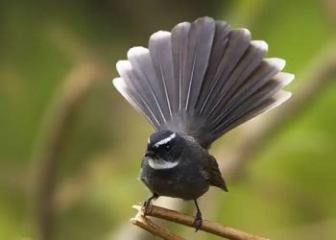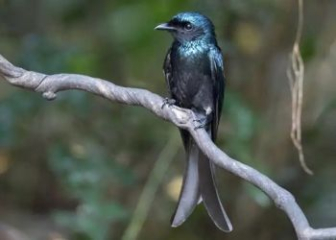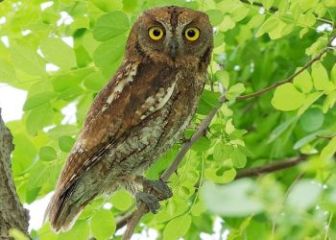Red-crowned crane - A rare bird species strictly protected
Blog | by
Red-crowned crane - a critically endangered bird in Vietnam, has a graceful appearance, red head, tall and slender figure, and is a symbol of longevity.
Red-crowned crane is one of the rare birds, a symbol of longevity but is on the list of critically endangered (CR) in Vietnam. With its elegant appearance, proud posture and interesting habits and behaviors, Sarus Crane not only receives the attention of scientists but also fascinates bird lovers.
In today's article, let's join nicebirds to learn in detail about the origin, habits and current status of red-crowned cranes in Vietnam to understand why this bird species receives so much attention!
Red-crowned crane information :
|
Scientific name |
Grus antigone sharpii |
|
Common name |
Red-crowned crane, naked-necked crane |
|
English name |
Sarus Crane |
|
Source |
Southeast Asia, South Asia and Australia |
|
Set |
Gruiformes - Order of Cranes |
|
Surname |
Gruidae - Crane Family |
|
Spend |
Grus |
|
Level of danger |
Critically Endangered in Vietnam |
Origin of the red-crowned crane
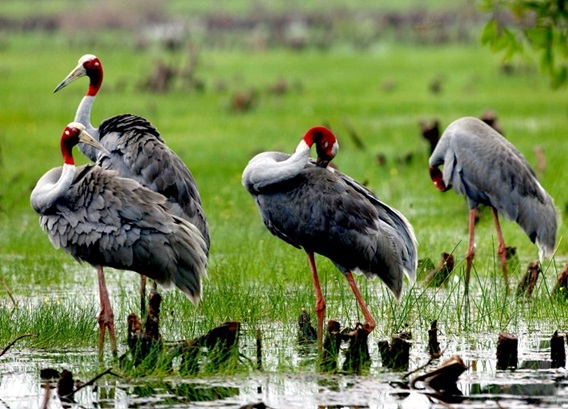
Red-crowned cranes are foraging in the marsh.
The Sarus Crane is one of the largest birds in the crane family, first described by naturalist Carl Linnaeus in 1758. They are native to Southeast Asia, South Asia and Australia, comprising three main populations distributed as follows:
- Largest population in India - Nepal: This is the population with the largest number of red-crowned cranes.
- Indochina such as Vietnam, Cambodia, Laos: In Vietnam, the number of red-crowned cranes is seriously declining.
- Northern Australia (Australia): Where the population is stable, less threatened
In nature, red-crowned cranes prefer to live in freshwater marshes, shallow water or acidic wetlands,...
Red-crowned crane appearance
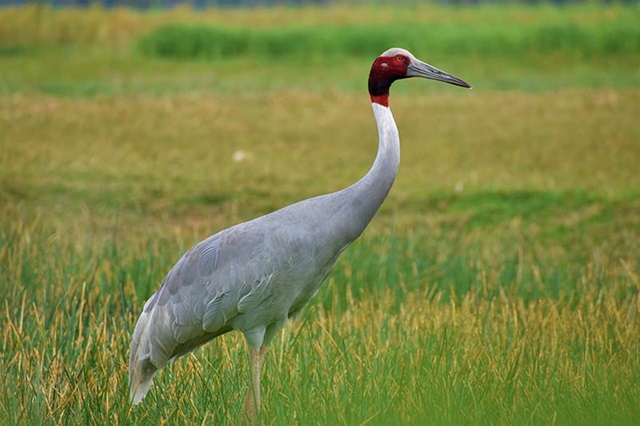
The red-crowned crane has a graceful appearance and is very tall.
The red-crowned crane is a bird with an extremely noble appearance, resembling a royal bird, so it is loved by many people. Let's learn more about their appearance here!
- Height : 1.5 - 1.8 m
- Wingspan : 2.4 - 2.7m.
- Weight : 5 - 12 kg.
- Color : The head and upper neck are bright red and completely hairless, the eyes are sharp orange-red, the lower neck and body, wings are covered with a layer of very smooth, shiny blue-silver gray feathers.
- Legs : Long, slender, usually pinkish-gray or pale red in color.
- Posture : Straight, high neck, looks very majestic
- Gait : Slow, graceful, looks very aristocratic.
- When flying : Stretching the neck and legs looks very unique.
- Sexing : Difficult to distinguish with the naked eye, based only on calls and behaviors occurring during the breeding season.
Red-crowned crane behavior
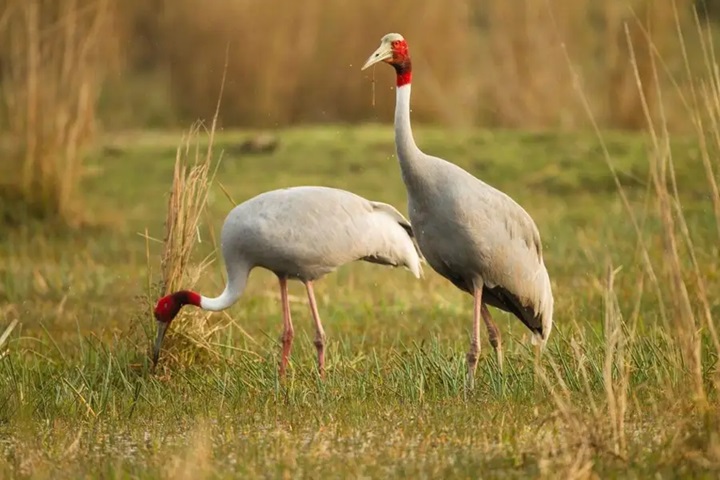
A pair of red-crowned cranes are foraging side by side.
Let's learn in detail about the habits and typical behaviors of red-crowned cranes to see if they are different from other birds in the crane family.
Faithful, mated for life
Red-crowned cranes are one of the most faithful birds. Once they pair up, they stay together for life, and even when one dies, the other usually does not pair up again and continues to live alone.
When the breeding season arrives, red-crowned cranes often perform a typical mating dance - this is also the most complex and important ritual for them to attract a mate. After that, both male and female red-crowned cranes work together to build nests, forage, incubate eggs and care for the chicks.
Is a migratory bird
Red-crowned cranes are seasonal migratory birds that fly in small flocks and follow a fixed route every year. Specifically:
- December - May : Red-crowned cranes migrate from Cambodia to Vietnam to winter and forage.
- After May : They will return to Cambodia to begin their breeding process.
Foraging behavior
Sarus cranes often forage in wetlands, grasslands or rice fields. They often eat roots and tubers of aquatic plants, especially reed grass - a super favorite food of sarus cranes.
They also eat seeds, grains or small animals such as frogs, toads, earthworms,...
Distinctive, resonant cry
The Sarus Crane has a very loud and distinctive call - sounding a bit like “u-aw, u-aw”, which is often used to communicate, warn of danger or keep in touch with mates while flying. Their calls can be heard several kilometers away.
Territorial and cautious
Sarus cranes are highly wary of humans and are easily frightened. They are also quite territorial, especially during the breeding season.
Red cranes are declining in Vietnam.
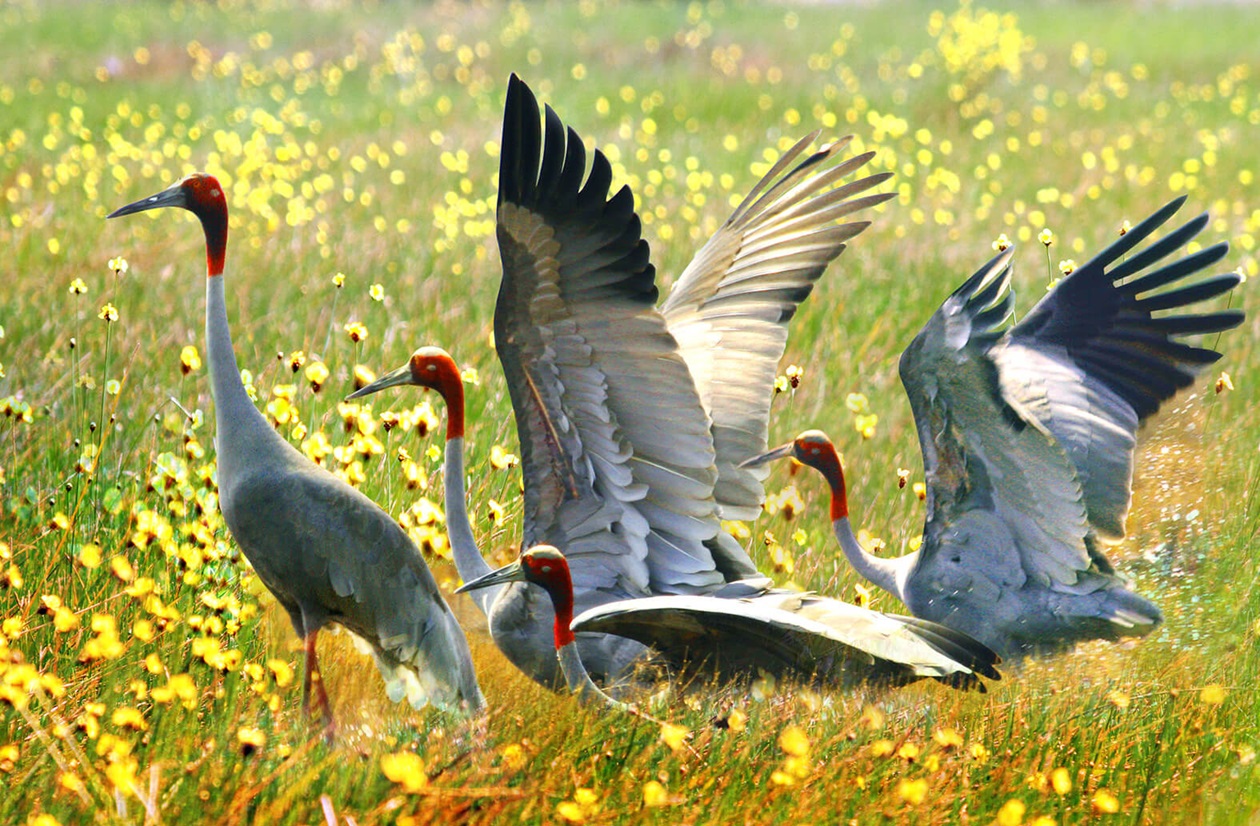
Currently, the red-crowned crane is a critically endangered animal in Vietnam.
Currently, in Vietnam, the number of red-crowned cranes is decreasing. Let's learn more about the current situation and the causes of this decline.
The reality of declining numbers
As we know, the Red-crowned Crane is a migratory bird. Previously, every year, hundreds to thousands of Red-crowned Cranes migrated and stopped at Tram Chim National Park (Dong Thap), Lo Go - Xa Mat Conservation Area (Tay Ninh). However, the number is now seriously decreasing and can be counted on the fingers. Specifically as follows:
- Only a few individuals remain in Tram Chim National Park.
- In Vietnam, no red-crowned cranes have been recorded reproducing naturally.
- The last recorded red-crowned crane in Vietnam was in 2022, after which it has not returned.
Causes of decline
Here are some reasons why red-crowned cranes are seriously declining in Vietnam. Let's find out more.
- Habitat loss Wetlands where red-crowned cranes feed and breed have been reduced due to conversion to farming, construction, etc.
- Climate change Long dry season and rising temperatures affect the reproduction and migration of this species.
- Illegal hunting affects the species' numbers.
- Artificial interventions such as burning grass at the wrong time cause the environment to lose its natural character.
Conservation of Sarus Cranes in Vietnam
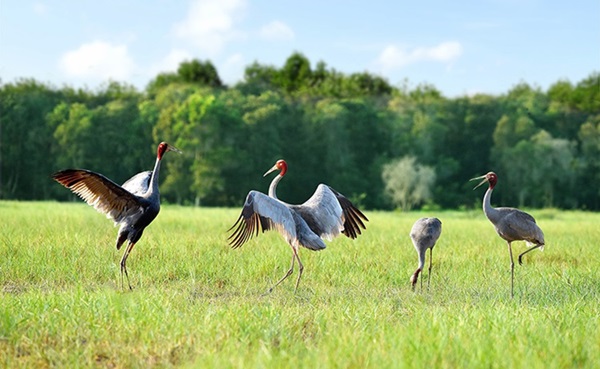
Conservation of red-crowned cranes in Vietnam is a difficult problem.
Currently, the conservation of red-crowned cranes in Vietnam is an extremely urgent issue, some practical solutions are as follows:
- Habitat restoration : Restore natural wetlands, plant reed grass (crane food), limit off-season grass burning.
- Tracking and monitoring : GPS chips can be added to track the migration of red-crowned cranes from Cambodia to Vietnam.
- International cooperation : Collaborate with neighboring countries such as Cambodia - home to major crane breeding grounds - to co-manage cross-border migrations.
- Raising community awareness : Raising people's awareness of the value of cranes and sustainable ecological development.
Interesting facts about red-crowned cranes
Let's learn some interesting facts about red-crowned cranes that not everyone tells you.
- The red-crowned crane is the tallest crane in the world, reaching a height of up to 1.8 meters.
- The name “red-crowned crane” also comes from the red, featherless skin on their heads. The red color becomes darker when they are excited or angry.
- Has a good memory and knows to avoid areas that have been trapped or hunted.
Questions and answers about red-crowned cranes?
What is the English name of the red-crowned crane?
The English name of the red-crowned crane is Sarus Crane, the scientific name is Grus antigone.
What does the Red-crowned Crane call sound like?
The red-crowned crane has a loud, far-reaching call that sounds like “u-aw, u-aw.”
What do red-crowned cranes like to eat most?
Red-crowned cranes like to eat the roots of reed grass and reed tuber the most.
Where do red-crowned cranes usually nest?
Sarus cranes often make their nests on the ground using aquatic plant remains.
Red-crowned crane image
The red-crowned crane is an extremely endangered species in Vietnam, so most of you have never seen a red-crowned crane in real life, right? To help you visualize more clearly the noble appearance of a red-crowned crane, here we have collected many beautiful, realistic images of this bird, let's admire them right away!
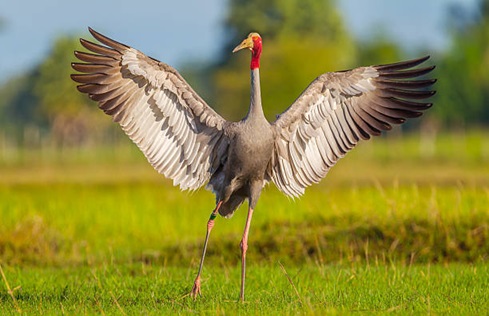
Image of a red-crowned crane spreading its wings.
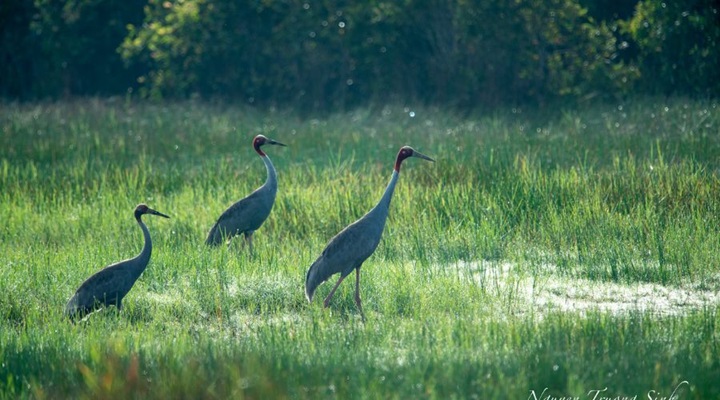
Red-crowned cranes forage in the grassy marsh.
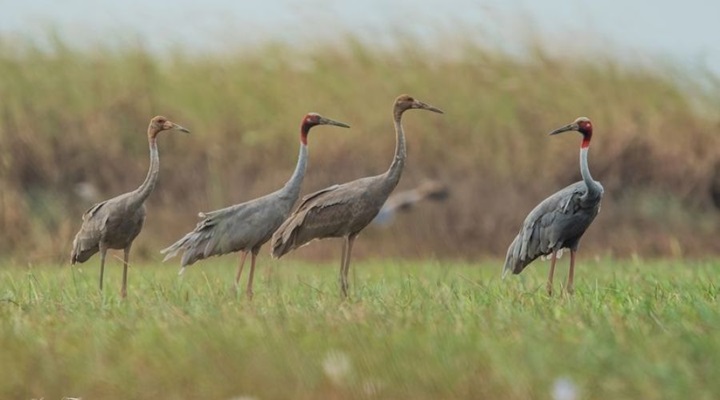
A flock of red-crowned cranes are foraging together.

A red-crowned crane is guarding its nest.
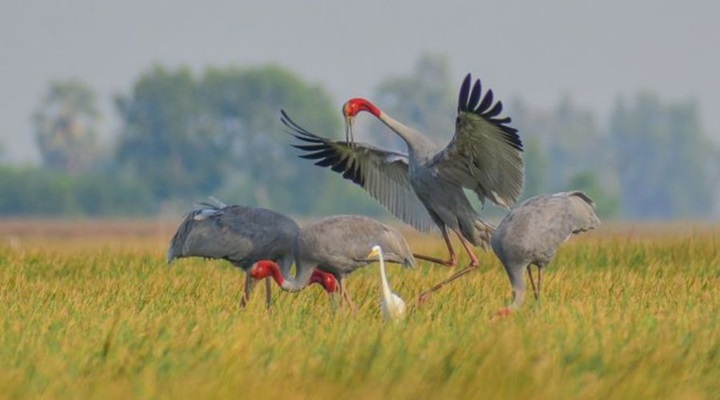
Red-crowned cranes are foraging in the golden rice fields.
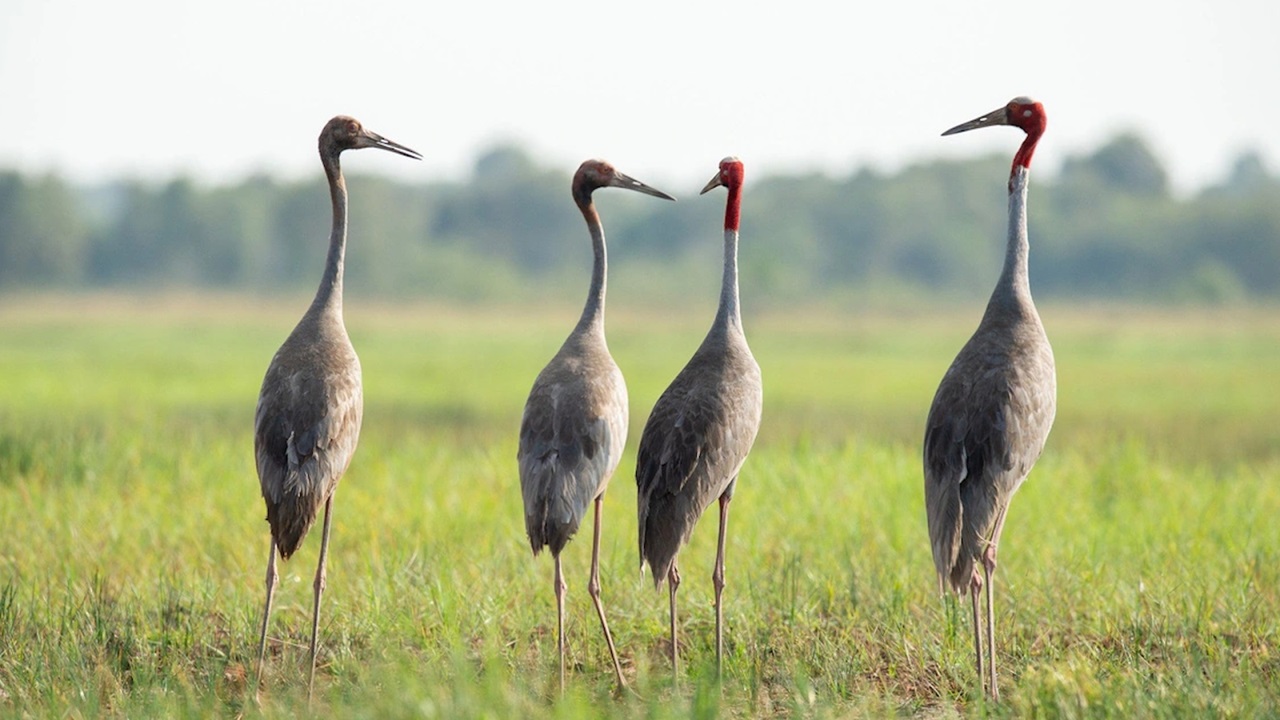
Red-crowned cranes with "huge" height.
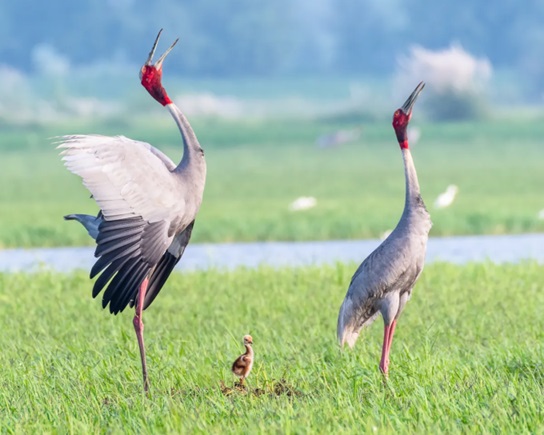
A family of red-crowned cranes standing together.
Thus, through the article on nicebirds.net has shared with you detailed information about the red-crowned crane . This is not only a beautiful, rare bird, but it also plays an important role in increasing the natural ecological diversity in Vietnam.
Hopefully through this, you have understood and will raise awareness of yourself and the community to contribute to protecting the habitat of red-crowned cranes in our country so that this special bird species does not become extinct.
Goodbye and see you soon in the next articles of the Blog section to discover more about many other beautiful bird species!
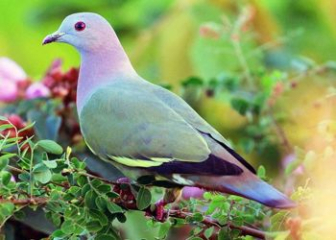
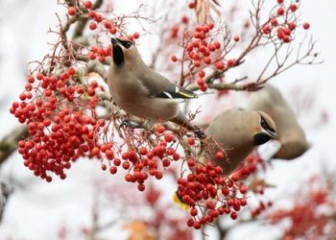
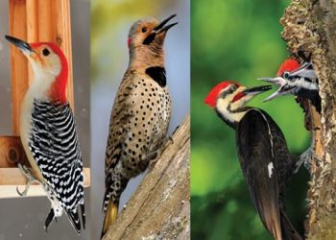

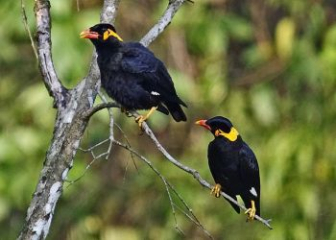


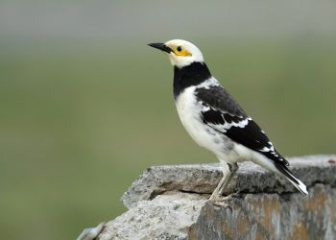
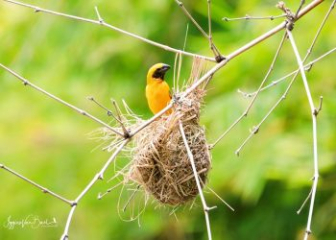
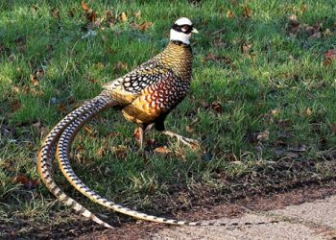
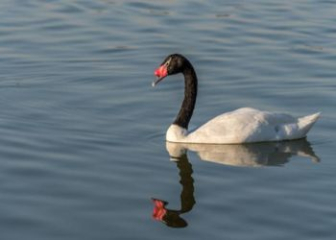
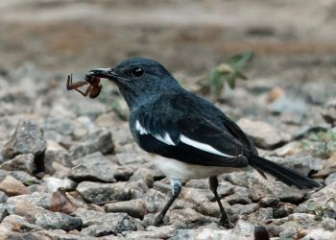
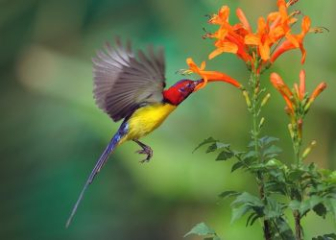
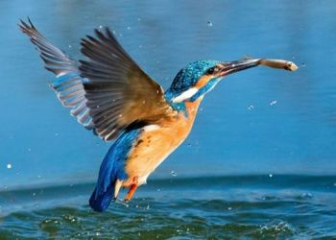
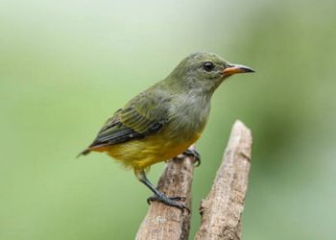
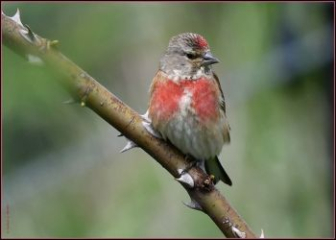
_350x250.jpg)
